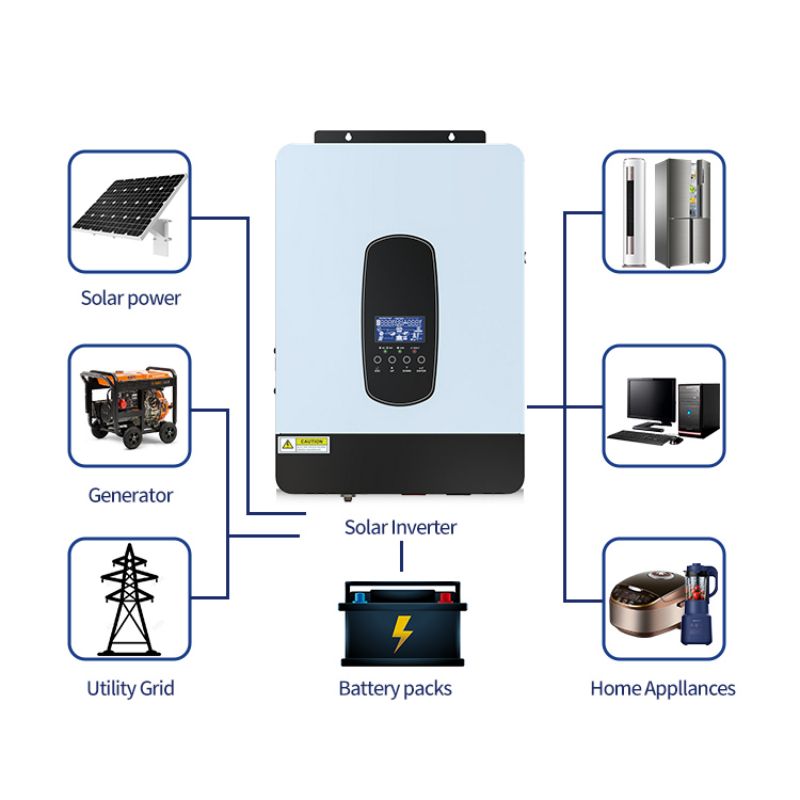Inverter and controller integration is the process of connecting solar inverters and solar charge controllers so that they can work together seamlessly.
The solar inverter is responsible for converting the DC power generated by the solar panels into AC power for household appliances or for feeding into the grid. The solar charge controller, on the other hand, is responsible for regulating the amount of power going into the battery bank to prevent overcharging and battery damage.
The compatibility of these two components is essential to ensure optimal performance of the solar power system.
When properly integrated, the controller and inverter work hand in hand to manage the power generated by the solar panels and regulate the amount of power going to the battery bank.
One of the main benefits of integrating inverters and controllers is that it simplifies the management of the solar power system. This is especially important for off-grid systems where the battery bank is the primary source of power. Effective management of the battery bank helps to extend the life of the battery bank and ensures that there is always enough power to meet the user’s needs.
Another benefit of inverter controller integration is that it improves the overall efficiency of the solar power system. By regulating the amount of power going into the battery bank, the controller prevents overcharging and reduces heat dissipation. This helps maximize the use of the energy stored in the battery bank and improves the overall efficiency of the system.
Inverter Controller Integration
1. Maximum Power Point Tracking (MPPT)
A technique used in solar controllers to optimize the power output of photovoltaic panels by tracking the point of maximum power transfer and adjusting the input voltage and current accordingly.
2. Battery Charge Controller
A device that regulates the charging current and voltage of a battery bank to prevent overcharging or undercharging and extend battery life.
3. Grid-tie inverter
An inverter is designed to synchronize with the grid to feed excess power generated by the PV system back into the grid, reducing the homeowner’s dependence on utility power.
4. Hybrid Inverter
An inverter that combines the functions of a solar inverter and a battery inverter, allowing the PV system to be used for both self-consumption and energy storage.
5. Remote Monitoring
A feature of some solar controllers that allows the user to remotely monitor system performance via a web interface or smartphone application, providing real-time data on power generation, battery status, and other relevant parameters.
What are the benefits of inverter/controller integration?
An inverter/controller integration ensures that a solar system operates optimally and efficiently by regulating the power flow. This can increase energy savings, improve battery life and reduce maintenance costs.
Can an integrated inverter/controller system be retrofitted to an existing solar system?
Yes, the integrated inverter/controller system can be retrofitted to an existing solar system. However, it is important to ensure that the integrated system is compatible with the existing components and is installed correctly to avoid problems or damage to the system.
Post time: Sep-11-2023
